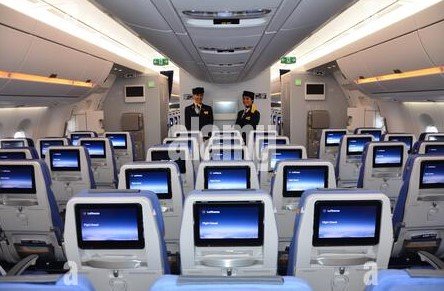Lufthansa is bringing back a direct link between Saudi Arabia’s capital and southern Germany’s cultural heart, aiming to capture a surge in travel demand ahead of the Kingdom’s big-ticket global events.
A Long-Awaited Return to the Route Map
From 27 October 2025, Lufthansa will restart its nonstop service between Riyadh and Munich — a route last flown in 2017. The move will boost the airline’s Saudi capacity by roughly 50%, signalling confidence in the market’s growth potential.
The timing isn’t random. Riyadh is gearing up for the World Expo in 2030 and the FIFA Men’s World Cup in 2034, both centrepieces of Saudi Vision 2030. Those events are expected to draw millions of international visitors, with airlines jostling for position well ahead of the rush.
Sadiq Mohamed, Lufthansa Group’s General Manager Sales for Saudi Arabia, called Munich “one of the most popular destinations in Western Europe” for local travellers, praising its blend of convenience and Alpine charm.
The New Flight Plan
Lufthansa’s new timetable is built for efficiency.
-
Outbound: LH641 departs Riyadh every Monday, Wednesday, and Friday at 6:25 a.m., landing in Munich at 10:25 a.m. local time.
-
Return: The flight back leaves Munich every Sunday, Tuesday, and Thursday at 9:45 p.m., arriving in Riyadh the following morning at 4:50 a.m.
The schedule creates seamless connections to the airline’s global network — particularly useful for passengers heading to Europe, North America, or Asia.

Aircraft, Comfort, and Fares
The route will be flown by Lufthansa’s Airbus A350-900, one of the fleet’s most modern and fuel-efficient models. It offers 293 seats split across Business, Premium Economy, and Economy classes.
Fares start at 1,495 SAR for a return ticket in Economy. Business travellers can expect lie-flat seating, while Premium Economy offers extra legroom and enhanced catering. Lufthansa’s bet is that both leisure and corporate demand will justify the capacity increase.
One Riyadh-based travel consultant said interest has already spiked since the announcement. “For a lot of clients, Munich is not just the destination — it’s the gateway,” she said. “They’re looking at onwards travel to places like Vienna, Zurich, even New York.”
Munich as a Strategic Gateway
Munich Airport — consistently ranked among Europe’s best — offers connections to around 130 destinations. Lufthansa sees it as a calmer alternative to its Frankfurt hub, with Skytrax awarding its Terminal 2 a five-star rating.
The airport’s location in Bavaria makes it an appealing arrival point for visitors bound for southern Germany, Austria, and northern Italy. Tourists from the Gulf have long favoured the region for its summer greenery, winter ski resorts, and luxury shopping.
According to German tourism officials, visitors from Saudi Arabia tend to stay longer and spend more per trip than the average European traveller — a demographic Lufthansa is keen to cater to.
Competitive Landscape Heats Up
The Riyadh–Munich route will sit alongside Lufthansa’s existing daily Riyadh–Frankfurt service. Lufthansa Group’s Italian subsidiary ITA Airways flies five times weekly from Riyadh to Rome, while Eurowings operates from Jeddah to Berlin, Cologne, and Stuttgart.
Here’s a snapshot of Lufthansa Group’s Saudi Arabia footprint this winter:
| Route | Airline | Weekly Frequency |
|---|---|---|
| Riyadh–Frankfurt | Lufthansa | 7 |
| Riyadh–Munich | Lufthansa | 3 |
| Dammam–Frankfurt | Lufthansa | 7 |
| Riyadh–Rome | ITA Airways | 5 |
| Jeddah–Rome | ITA Airways | 3 |
| Jeddah–Berlin/Cologne/Stuttgart | Eurowings | 7 |
With the Munich service added, Lufthansa Group will offer 25 weekly flights to Saudi Arabia this winter. Across the broader Middle East, the group’s carriers will operate more than 120 flights per week.
A 65-Year Connection
Lufthansa’s relationship with Saudi Arabia stretches back to 1960, when the airline first served Dammam. The carrier marked its 65th anniversary in the Kingdom earlier this year, highlighting what it calls a “deeply rooted” commitment to the market.
Executives point to the steady growth of Riyadh itself — both in population and global profile — as justification for the expansion. New business districts, mega-projects like Qiddiya, and infrastructure upgrades are reshaping the city into a regional hub.
One aviation analyst noted that Lufthansa’s move also hedges against competition from Gulf carriers. “Saudi Arabia is opening up fast, but Emirates, Qatar Airways, and Etihad still dominate the long-haul space,” he said. “Direct flights to Europe from Riyadh are Lufthansa’s way of keeping a foothold.”
Tourism and Trade Synergy
Beyond passenger numbers, there’s also a trade angle. Bavaria is home to major manufacturing and tech industries, making Munich a natural link for Saudi businesses. Cargo belly capacity on the A350 will allow shipments of high-value goods, from automotive parts to pharmaceuticals.
Saudi tourism officials, meanwhile, are banking on Germans to discover Riyadh’s new cultural and entertainment offerings — from modern art spaces to Formula One races. They see the Lufthansa route as a two-way bridge.
As winter approaches, the airline is banking on this bridge becoming busy fast. And if demand meets expectations, more frequencies — or even year-round daily service — could be on the horizon.
